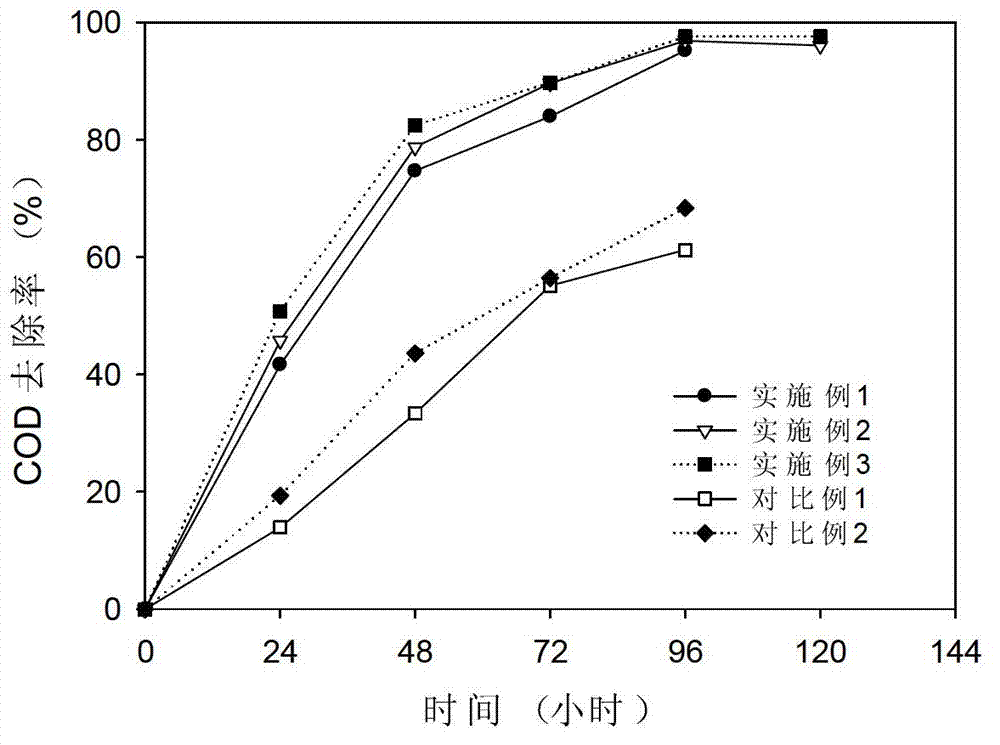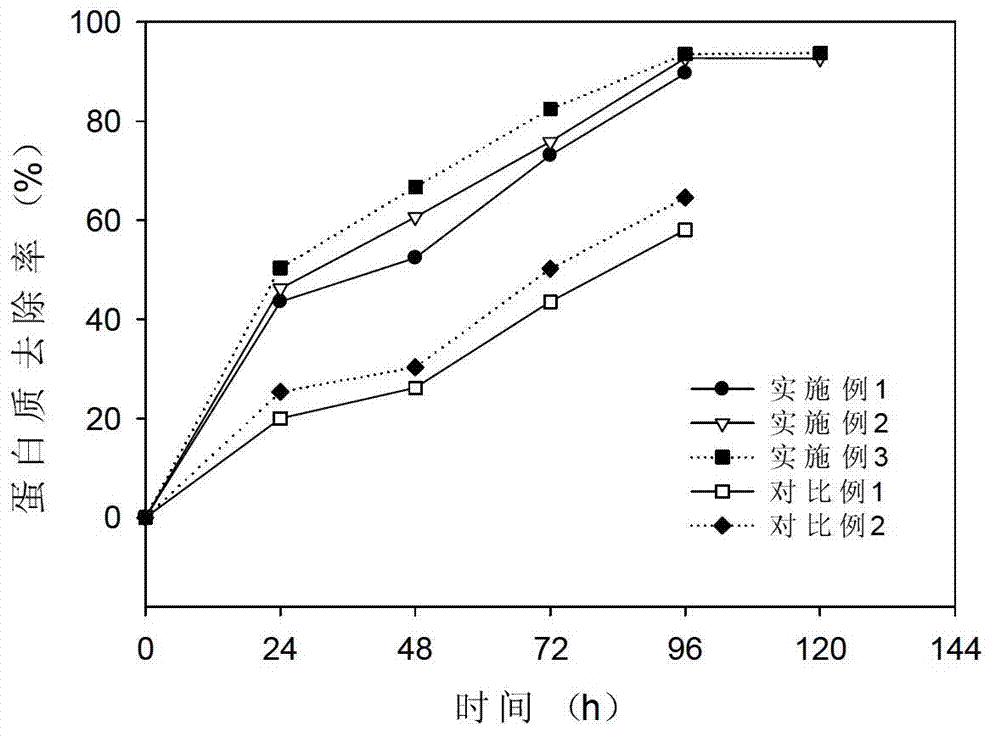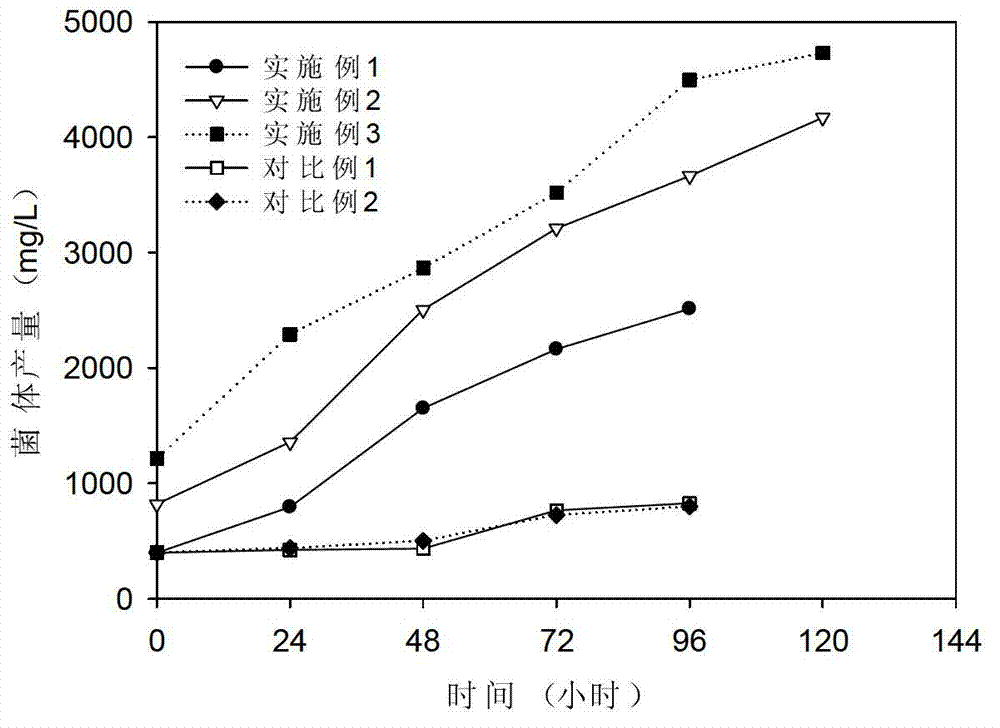Method for treating soybean processing wastewater by utilizing photosynthetic bacteria and recycling wastewater
A technology for processing waste water and photosynthetic bacteria, which is applied in the field of waste water recycling, can solve the problems of low degree of waste water recycling, complex process, secondary pollution, etc., and achieve the effects of enhancing cell activity, saving energy consumption, and easy operation
- Summary
- Abstract
- Description
- Claims
- Application Information
AI Technical Summary
Problems solved by technology
Method used
Image
Examples
Embodiment 1
[0026] First, sodium succinate was added to the soybean processing wastewater to a final concentration of 725 mg / L and ammonium sulfate to a final concentration of 400 mg / L;
[0027] Then adjust the pH value of soybean processing wastewater to 7.0;
[0028] Then add Rhodobacter sphaeroides to the soybean processing wastewater to a final concentration of 400 mg / L;
[0029] The treatment conditions are natural light, the treatment temperature is 25-30°C, and the treatment time is 96 hours; during the treatment process, micro-aeration is carried out into the soybean processing wastewater through the aeration pump, the aeration intensity is controlled by a flow meter, and a dissolved oxygen meter is used to control the aeration intensity. Real-time monitoring to control the dissolved oxygen concentration in soybean processing wastewater at 0.5~1.0 mg / L. The values of COD, protein and bacteria production in sewage were measured every 24 hours.
Embodiment 2
[0031] First, sodium succinate was added to the soybean processing wastewater to a final concentration of 450 mg / L and ammonium sulfate to a final concentration of 300 mg / L;
[0032] Then adjust the pH value of soybean processing wastewater to 7.0;
[0033] Then add Rhodobacter sphaeroides to soybean processing wastewater to a final concentration of 819 mg / L;
[0034] The treatment conditions are natural light, the treatment temperature is 25-30°C, and the treatment time is 120 hours; during the treatment process, micro-aeration is carried out into the soybean processing wastewater through the aeration pump, the aeration intensity is controlled by a flow meter, and a dissolved oxygen meter is used to control the aeration intensity. Real-time monitoring to control the dissolved oxygen concentration in soybean processing wastewater at 0.5~1.0 mg / L. The values of COD, protein and bacteria production in sewage were measured every 24 hours.
Embodiment 3
[0036] First, sodium succinate was added to the soybean processing wastewater to a final concentration of 1000 mg / L and ammonium sulfate to a final concentration of 1500 mg / L;
[0037] Then adjust the pH value of soybean processing wastewater to 7.0;
[0038] Then add Rhodobacter sphaeroides to the soybean processing wastewater to a final concentration of 1214 mg / L;
[0039] The treatment conditions are natural light, the treatment temperature is 25-30°C, and the treatment time is 120 hours; during the treatment process, micro-aeration is carried out into the soybean processing wastewater through the aeration pump, the aeration intensity is controlled by a flow meter, and a dissolved oxygen meter is used to control the aeration intensity. Real-time monitoring to control the dissolved oxygen concentration in soybean processing wastewater at 0.5~1.0 mg / L. The values of COD, protein and bacteria production in sewage were measured every 24 hours.
PUM
 Login to View More
Login to View More Abstract
Description
Claims
Application Information
 Login to View More
Login to View More - R&D
- Intellectual Property
- Life Sciences
- Materials
- Tech Scout
- Unparalleled Data Quality
- Higher Quality Content
- 60% Fewer Hallucinations
Browse by: Latest US Patents, China's latest patents, Technical Efficacy Thesaurus, Application Domain, Technology Topic, Popular Technical Reports.
© 2025 PatSnap. All rights reserved.Legal|Privacy policy|Modern Slavery Act Transparency Statement|Sitemap|About US| Contact US: help@patsnap.com



